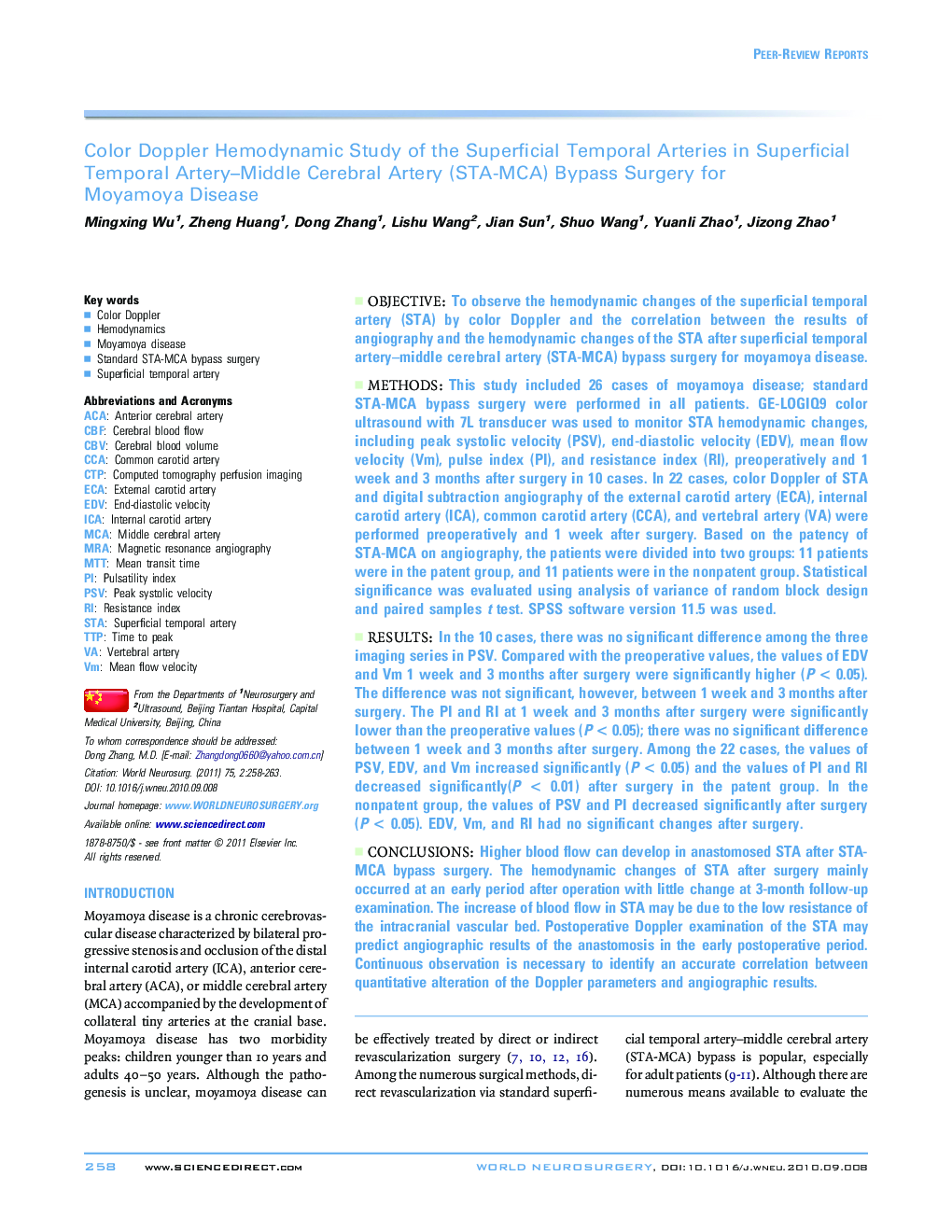| کد مقاله | کد نشریه | سال انتشار | مقاله انگلیسی | نسخه تمام متن |
|---|---|---|---|---|
| 3097465 | 1190944 | 2011 | 6 صفحه PDF | دانلود رایگان |

ObjectiveTo observe the hemodynamic changes of the superficial temporal artery (STA) by color Doppler and the correlation between the results of angiography and the hemodynamic changes of the STA after superficial temporal artery–middle cerebral artery (STA-MCA) bypass surgery for moyamoya disease.MethodsThis study included 26 cases of moyamoya disease; standard STA-MCA bypass surgery were performed in all patients. GE-LOGIQ9 color ultrasound with 7L transducer was used to monitor STA hemodynamic changes, including peak systolic velocity (PSV), end-diastolic velocity (EDV), mean flow velocity (Vm), pulse index (PI), and resistance index (RI), preoperatively and 1 week and 3 months after surgery in 10 cases. In 22 cases, color Doppler of STA and digital subtraction angiography of the external carotid artery (ECA), internal carotid artery (ICA), common carotid artery (CCA), and vertebral artery (VA) were performed preoperatively and 1 week after surgery. Based on the patency of STA-MCA on angiography, the patients were divided into two groups: 11 patients were in the patent group, and 11 patients were in the nonpatent group. Statistical significance was evaluated using analysis of variance of random block design and paired samples t test. SPSS software version 11.5 was used.ResultsIn the 10 cases, there was no significant difference among the three imaging series in PSV. Compared with the preoperative values, the values of EDV and Vm 1 week and 3 months after surgery were significantly higher (P < 0.05). The difference was not significant, however, between 1 week and 3 months after surgery. The PI and RI at 1 week and 3 months after surgery were significantly lower than the preoperative values (P < 0.05); there was no significant difference between 1 week and 3 months after surgery. Among the 22 cases, the values of PSV, EDV, and Vm increased significantly (P < 0.05) and the values of PI and RI decreased significantly(P < 0.01) after surgery in the patent group. In the nonpatent group, the values of PSV and PI decreased significantly after surgery (P < 0.05). EDV, Vm, and RI had no significant changes after surgery.ConclusionsHigher blood flow can develop in anastomosed STA after STA-MCA bypass surgery. The hemodynamic changes of STA after surgery mainly occurred at an early period after operation with little change at 3-month follow-up examination. The increase of blood flow in STA may be due to the low resistance of the intracranial vascular bed. Postoperative Doppler examination of the STA may predict angiographic results of the anastomosis in the early postoperative period. Continuous observation is necessary to identify an accurate correlation between quantitative alteration of the Doppler parameters and angiographic results.
Journal: World Neurosurgery - Volume 75, Issue 2, February 2011, Pages 258–263